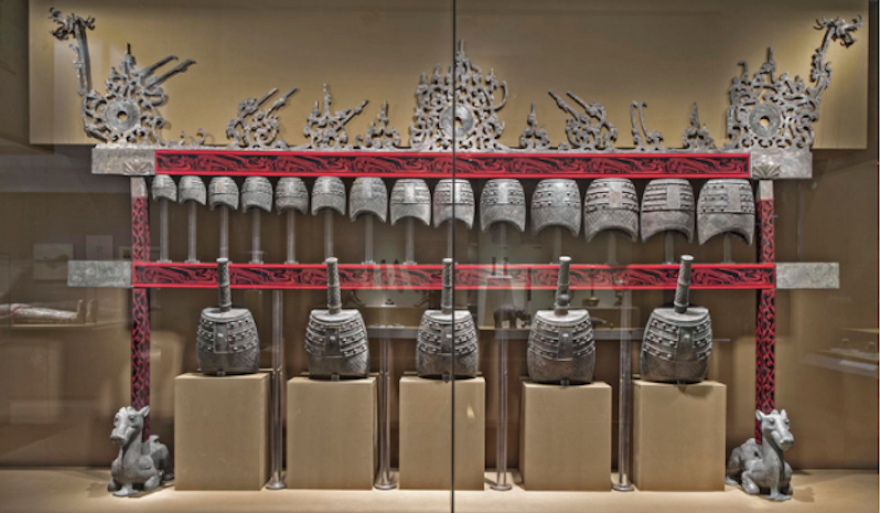Egyptian pharaohs must never have heard the saying “you can’t take it with you.” They had massive tombs built, preserved their bodies, and included every possible thing they might need in the next world.
It’s less well known that Chinese rulers from theHan Dynasty had similar elaborate preparations. Artifacts from one such burial can be seen in the“Tomb Treasures” exhibit currently at San Francisco’s Asian Art Museum.
It not only contains a collection of precious jade, and everyday essentials, but also symbolic musicians and dancers, and an actual set of bronze bells that the emperor asked to have buried with him.
The bells, arranged small to large, hang from a carved wooden frame. Allison Wyckoff, manager of public programs at the museum, says “The musicians we’re working with, from Pet the Tiger and Gamelan Encinal, have made mallets to play specifically on these bells.”
David Samas, part of the Pet the Tiger group, says the custom mallets were just the start of it:
“We have no idea what these bells originally sounded like. We don’t have any of the wooden frames. All that we have left is the bronze [bells] that survived,” he says.
And actually, the bells that survived are not those being heard in the performances, because of their great age.
“Yeah,” he admits, “these are physical bronze replicas made by the museum inNanjing, China, that's loaning this collection to the Asian Art Museum.”
It’s understandable that the authorities don’t want the public banging on the original 2,000-year-old instruments — you can look, but don’t touch — but Samas wishes he wasn’t included in the prohibition. “I would love to get my paws on those beautiful old bells,” he chuckles.
There’s no way of knowing what tunes were performed on the bells, since no notations were found in the tomb, so the Bay Area ensemble calledGamelan Encinal composed music for them. The most adventurous piece, according to Samas, is titled “Dragon of Music,” which he says “features a large sonic painting, and has a kind of textural sense. It sounds a little like you’re wandering around the unconscious alleys in the back-mind of Buddhism.”
There are three themes in the “Tomb Treasures” exhibit: Everlasting Happiness Without End; Eternal Life Without Limit, and Enduring Remembrance Without Fail. Allison Wyckoff with the museum thinks music fits that last theme best.
“This is reviving an ancient tradition,” she says. “So I think it’s very apropos to use that quote as a touchstone.”
Just as there are three themes to the exhibit, only three performances were scheduled for the bells. Two of those have already passed into eternity. The final one is May 21st. If you miss that one, you’ll have to travel to Nanjing, China to hear the sound of these imperial bells.


